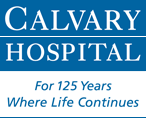Like many young men of his generation, August DeGazio joined the war effort, serving during World War II as an Army-Airforce of officer with the rank of Master Sergeant in Mechanics and stationed in Biloxi, Mississippi. One would hardly expect a musician’s resume to start with this experience, but “Gus”(as his friends referred to him) lived a life with some interesting contradictions. He chose a career that put him on the stage and in front of the public, but he did not want or need to be in the spotlight. He had numerous students and friends, but was a very private person. He cared deeply for his family, but was not himself a family man. And contrary to the stereotype of a struggling artist, Gus made a comfortable living as a musician.
When he was honorably discharged from the service, he returned home to New Rochelle, NY to pursue a career in music. Gus, a self-taught musician, had honed his talent through years of practice. His instrument was electric guitar, speci cally a Howard Roberts Epiphone Archtop jazz guitar with fat strings that produce a particularly warm sound. His passions were jazz and standards from the American Songbook. He was a crackerjack soloist with matinee idol good looks, and quickly earned the distinction of being the “First to Call Person” among music executives booking gigs and studio recordings. He also played clubs and at special events in pick-up bands, trios and quartets.
He eventually set up a music studio on North Avenue and discovered he had a gift for teaching. Long-time student Gary Tenenzapf notes, Gus was a great mentor, he stayed in touch with his students. Gary credits Gus with helping him to develop stamina and concentration, recalling one practice session when he and Gus played together for over 9 hours!
In the 60’s and 70’s, in spite of the popularity of rock-n-roll, Gus refused to teach it. He continued to focus on the fundamentals: fingering, chord progressions, harmony, phrasing, sound techniques and rhythm. He taught school kids and adults and had high standards for both, expecting them to arrive prepared for their lessons. He would also challenge them, saying, “Why just play something you know; play something you don’t know -that’s how you learn.”
His friend, Bob Archigian points out, “It is hard to overestimate the impact Gus had in developing young artists: he was prolific. Teaching is what Gus enjoyed most! Gus nurtured and supported his students, schooling them on the realities of life in the music business in addition to developing their talents.” Bob also reports that Gus has protégés playing professionally in cities such as San Francisco, Los Angeles, Las Vegas and New York, and he also inspired generations of students to become teachers.
In his leisure time, Gus enjoyed motor boating and building exquisite model airplanes crafted from wood and painstakingly recreated in full detail. He would collaborate on these museum-quality projects with his good friend, the famous guitarist Joe Puma, who would draft the schematics for these scaled down replicas, the smallest one having a 3-foot wingspan.
Cars were his only indulgence. Gus drove a Cadillac convertible and he maintained an Indy 500 DeSoto Pace Car, a vintage vehicle he inherited from his brother. He also tinkered with a Chrysler which he lovingly restored, investing hours of research (without the aid of the internet) and traveling up and down the East coast to inspect and acquire the parts needed for the project.
Friends and students mention that Gus had unwavering convictions that guided his actions; he was principled. Perhaps because his father died at an early age, Gus felt a tremendous sense of responsibility to provide for his family. He was close to his siblings and even maintained a house for a brother and sister and provided them with support during their lifetimes.
Family friend Dennis Fitzgerald commented, “I have never met a new person. He lived a simple life with a generous spirit.” Bob Archigian agrees, “He was never a taker… always a giver.”
And through his estate Gus continues to give. He made the extraordinary decision to donate his entire estate to charity. Calvary was fortunate to be the recipient of half of the assets from Gus’s estate, which will amount to over $645,000. Gus did not have any immediate family cared for at Calvary. He simply admired the work of the hospital and felt compelled to contribute a significant portion of his life savings to ensure others will continue to benefit from the Hospital’s unique care. We are deeply honored to be entrusted with a legacy from this gifted, but humble musician who downplayed his accomplishments, telling his students, “I am just a tune-smith.”
Categories
Archives
- June 2025
- May 2025
- April 2025
- March 2025
- February 2025
- October 2024
- August 2024
- July 2024
- May 2024
- April 2024
- March 2024
- February 2024
- December 2023
- November 2023
- October 2023
- August 2023
- July 2023
- June 2023
- May 2023
- April 2023
- March 2023
- January 2023
- December 2022
- October 2022
- August 2022
- July 2022
- June 2022
- April 2022
- March 2022
- February 2022
- January 2022
- October 2021
- September 2021
- August 2021
- July 2021
- June 2021
- May 2021
- April 2021
- March 2021
- February 2021
- December 2020
- November 2020
- October 2020
- September 2020
- August 2020
- July 2020
- May 2020
- April 2020
- March 2020
- February 2020
- January 2020
- December 2019
- November 2019
- October 2019
- September 2019
- August 2019
- July 2019
- May 2019
- April 2019
- March 2019
- February 2019
- January 2019
- December 2018
- November 2018
- October 2018
- September 2018
- August 2018
- July 2018
- June 2018
- May 2018
- April 2018
- December 2017
- November 2017
- October 2017
- September 2017
- August 2017
- July 2017
- June 2017
- May 2017
- April 2017
- April 2012

